Soul Science: Genetics and Tantra with Ingrid Borecki, PhD
by
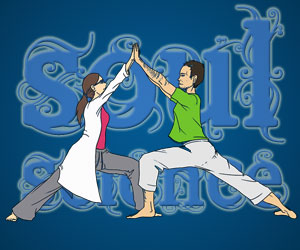 “Then according to the laws of the universe under Tantra, evil does not exist.”
“Then according to the laws of the universe under Tantra, evil does not exist.”
This is a bold statement made by Rod Stryker during a ParaYoga teacher training back in 2009 or so. It was during my early days as a developing yogini, and this statement warmed my heart and soul, and made the world seem to be a safe place where anything is possible.
From the back of the room, a hand raises. From her meditative seat, Ingrid Borecki intelligently and genially points to several sources of evil, striving to understand the statement from this revered yoga master (or beloved ‘Yogarupa’ as he is often referred). Yogarupa responded by smiling broadly and saying “Ahhh…I must be much more careful when Ingrid is in the room!”.
Ingrid is a remarkable scientist, and a remarkable yogini (or Tantrika, as she often reminds me) driven by an abundance of curiosity. The work she does in both areas is driven by a need to truly understand, “Why are we the way we are?” Ingrid has explored many potential sources, but ended up at two major areas of study that are helping her to unravel the essence of what makes a human being tick.
As a scientist, Ingrid focuses on DNA and unravelling the genetics behind human traits that contribute to a variety of common, complex diseases, such as cardiovascular disease, metabolic disorders like diabetes, and cancer. She said,
“I consider these conditions not only from the standpoint of disease mechanism, but also in an evolutionary and societal context. Clearly, there is an intimate relationship between humans and the world around them, and many such complex diseases are the result of an imbalance in an individual and his or her environment. While genes provide a blueprint for all life forms, they are not deterministic, and environmental interactions are of key importance.”
She is involved in countless studies, and is co-director of the Division of Statistical Genomics in the Genome Sciences Center at Washington University in St. Louis, MO.
Observing how genomics influence specific disease states serve to provide the clues needed to develop evidence-based approaches to medical treatment. Yet an important piece of the make-up of a human being is missing from the endless streams of data that DNA can provide. Ingrid has numerous questions that aren’t being sufficiently answered by the world of science.
“I also want to know:
How does a healthy person feed body, mind, and soul to prevent disease?
How does the “soul” fit into why humans are the way they are?
How does a normal, healthy human make his or her life even better?
And even more fundamentally, what is our purpose in this life?
How can we evolve our consciousness and be happy?
And ultimately, how can we best serve humanity and all of life, itself?”
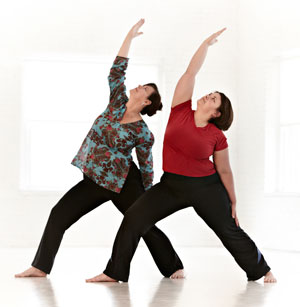 Enter yoga. Ingrid has always practiced some form of yoga. In her undergrad days, she practiced physically in the form of dance, and intellectually by modifying her early religious beliefs by taking cues from the Jesuits, who, as philosophers, teach an expanded view of God and creation. Eventually this took her to experience energetic states and vibratory patterns…which is at the heart of yoga. She said that when she discovered yoga, she relaxed.
Enter yoga. Ingrid has always practiced some form of yoga. In her undergrad days, she practiced physically in the form of dance, and intellectually by modifying her early religious beliefs by taking cues from the Jesuits, who, as philosophers, teach an expanded view of God and creation. Eventually this took her to experience energetic states and vibratory patterns…which is at the heart of yoga. She said that when she discovered yoga, she relaxed.
“Yoga is a highly developed system of philosophy and practices that extended far beyond what I was able to intuit on my own – my only remaining task is to experience it for myself.”
When we met to discuss the “convergence” of her two worlds (Yoga + Science), Ingrid pointed at the line I drew between “Yoga” and “Science” and said
“I don’t believe this division exists. Yoga and science are fundamentally the same.”
I asked her what she meant, as from where I sit, the teachings of yoga are not currently incorporated into the science labs I have seen. From the many blogs and twitter feeds I read, the two are at odds.
She said,
“The difference lies in the subject you are studying, the instruments you use to study it, and the laboratory that you are using. When I practice science, I’m using the tools and instruments in my laboratory. Things like the sequencer and the computer, are instruments for unravelling the mysteries of DNA. I apply these instruments to humans, tissues/cells etc – things that are external to me.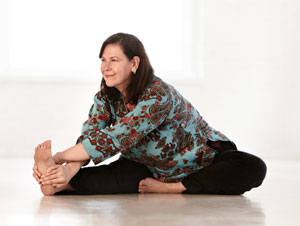
When I’m practicing yoga, my test subjects are my patterns, my mind, my emotions, and my physical body; and my instruments are 5000 year-old yoga, meditation, and breathing techniques. My laboratory is my internal world. In this laboratory, I experience the work of yoga practice, observe the results on my mind, my emotions, and my body, and adjust my technique accordingly, then do the work, observe again, and repeat.”
So Ingrid and I talked about how we can convey this to you, the readers of BenchFly, and she supplied a protocol (or “vinyasa”)of yogic practices, which can be used together or separately.
Each of these poses/techniques can be done at your bench, or (if you need privacy) in the big stall of the bathroom (which is Kristy’s chosen public practice space).
.
Ingrid’s 3 Steps to Rejuvenation
1) Move your energy
From my experience, this is particularly refreshing midday, when you might need to shake of the morning and come into the afternoon refreshed and replenished. Stand up anywhere (as private as you wish). Now shake – shake your arms and hands out. Shake your head. Now shoulders. Hips – let them go! Connect with your lower chakras (energy centers) and let go! Shake your legs and then, feet. Shake anything else that is calling for attention. Low key versions of shaking (wiggling) also work to move energy in your whole body.
.
2) Ground your energy and twist!
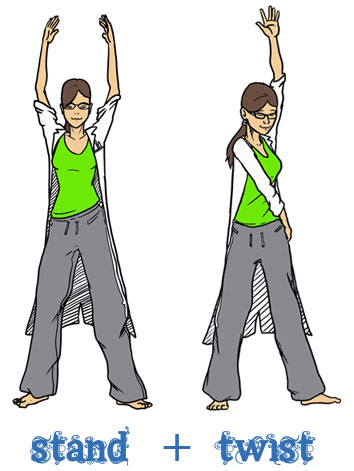 Now, stand still. Find a comfortable position, standing or sitting. Raise your arms above your head and breathe in … and out. Feel your ribs and middle back lengthen. Feel free. Feel heroic.
Now, stand still. Find a comfortable position, standing or sitting. Raise your arms above your head and breathe in … and out. Feel your ribs and middle back lengthen. Feel free. Feel heroic.
Now reach your right hand across your front to your left hip and gently twist your spine. Breathe in and out. Lovely, isn’t it?
Reach once more to the sky with both arms. Feel beautiful. Then twist in the opposite direction. Breathe. Alternate sides as long as it feels good. Don’t overextend the twist or “pop” the back. Keep it gentle and observe the effects.
Come center and get still. Breathe in and out. Try to breathe in for as long as you breathe out. In-2-3-4, out-2-3-4, in-2-3-4, etc. Move on when you feel done.
.
.
.
.
3) Agni Sara – ( agni=fire, sara = essence)
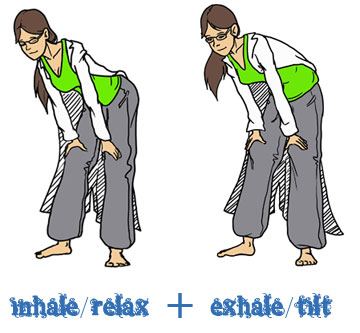 Practice note: Agni Sara is considered an all over perfect practice. When time is limited for practice, just do Agni Sara for 5 min each day and your whole world can start to shift. Yogis like Ingrid and I do Agni Sara everyday, often before we even brush our teeth!
Practice note: Agni Sara is considered an all over perfect practice. When time is limited for practice, just do Agni Sara for 5 min each day and your whole world can start to shift. Yogis like Ingrid and I do Agni Sara everyday, often before we even brush our teeth!
Standing with feet hip distance, gently fold into a forward bend. Breathe in and roll up placing your hands on your knees. As you exhale arch your back up – like a cat – lightly, but firmly. Hold out the breath. Now release and breathe naturally. Repeat.
When you next contract your abdomen up, think about pulling it in even more. Release when ready. Repeat a few times. This practice should produce a feeling of energy, motivation, and fire in the navel center.
Energy for life. Energy for health. Many blessings to you –
Namaste!
.
Ingrid Borecki has been a professor of genetics and biostatistics at Washington University for the last 29 years and a yogi for the last 11. She has an enduring curiosity about life, its origins, mechanisms, and purpose, and has been studying and pondering these issues her whole life. Using the other side of her brain, she likes to cook, dance, sing, and create art using photography. She lives with her husband and 16-year-old daughter in St. Louis.
.
Kristy’s main mission in life is to demystify complicated science and health concepts. In her job, she does this as a social media marketing professional for life science companies, and in her off hours Kristy studies/teaches yoga and meditation…and carefully navigates the alternative health world. Keep up with her latest thoughts on Twitter.
.


alan@benchfly
wrote on June 1, 2012 at 9:00 am
Is this something we should do everyday–for example as a routine in the morning–or should we do it only when we're feeling stressed out or have been sitting too long and need a pick-me-up?
Kristy Meyer
wrote on June 3, 2012 at 7:55 pm
Hi Alan,
Like many practices, Agni Sara should is most effective when practiced frequently. It is better to do 2-5 min every day than to do a much longer practice infrequently. It is also very useful if you find yourself in a low energy state or need a pick-me-up.
For me personally, I practice almost every day unless I have a stomach issue. And then I do a less intense version.
Let me know how it goes! :)
sciguy
wrote on June 1, 2012 at 9:09 am
i must admit i've tried yoga before and didn't really get that much out of it other than a good stretch. is there some sort of grace period where we build up to the results or should we feel something earth shattering the first time we do it? and should we be able to experience something after trying the exercises in the article?
Kristy Meyer
wrote on June 3, 2012 at 8:05 pm
Good question, sciguy. I
So. #1. Do try the exercises in the article. These techniques are simple but powerful techniques for moving energy, and can help to build a sensitivity to energy. Give it a go and let me know how it goes.
#2 I recommend trying a couple of different teachers before you abandon the benefits completely. I have had yoga classes that were like being reborn, and I have been to some that are more boring than watching paint dry.
#3 yoga does not necessarily appeal to everyone. Some people get the same effect by Hiking or by working on their houses. Find activities that bring you joy and do them! If yoga ain't it, move on. :)